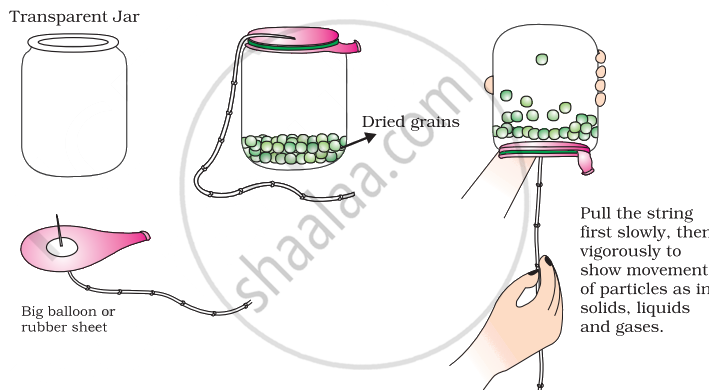Advertisements
Advertisements
प्रश्न
State which of the three states of matter Le. solids, liquids or gases – have
(a) No definite volume
(b) A definite shape
(c) High density
(d) No free surfaces
(e) Particles – which diffuse very easily.
उत्तर
(a) Gases
(b) Solids
(c) Solids
(d) Gases
(e) Gases
APPEARS IN
संबंधित प्रश्न
Why is ice at 273 K more effective in cooling than water at the same temperature?
State whether the following is physical or chemical changes.
heating of water —
A few substances are arranged in the increasing order of 'forces of attraction' between their particles. Which one of the following represents the correct arrangement?
Name one property which is shown by ammonium chloride but not by sodium chloride.
Which contains more heat, 1 kg of water at 100° C or 1 kg of steam at 100° C ? Give reason for your answer.
Define the term 'latent heat of fusion' of a solid. How much is the latent heat of fusion of ice ?
Draw a labelled diagram of the experimental set-up to study the latent heat of fusion of ice.
Define Intermodular force of attraction
Fill in the blanks with the correct words of the statement given below:
During sublimation, a solid on heating turns directly into _________ and on cooling back to __________.
Prepare a model to demonstrate movement of particles in solids, liquids and gases.
For making this model you will need
- A transparent jar
- A big rubber balloon or piece of stretchable rubber sheet
- A string
- Few chickpeas or black gram or dry green peas.
How to make?
- Put the seeds in the jar.
- Sew the string to the centre of the rubber sheet and put some tape to keep it tied securely.
- Stretch and tie the rubber sheet on the mouth of the jar.
- Your model is ready. Now run your fingers up and down the string by first tugging at it slowly and then rapidly.

